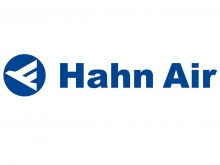 Hahn Air has announced the addition of eight new airlines into its global network of more than 350 air, rail and shuttle companies in the second quarter of 2019. With the new additions, the total number of new partners for this year becomes 22. According to a statement by Hahn Air, six of the newly integrated partners are expanding their distribution reach by using the Hahn Air product HR-169 and thereby making their flights available to travel agents on the Hahn Air HR-169 ticket. The following airlines can now be issued under their own two-letter-codes in selected GDSs: Air Greenland (GL), Air North (4N) from Canada, Cyprus Airways (CY), the Chinese carrier Donghai Airlines (DZ), the Russian airline Nordwind Airlines (N4) and MyWay Airlines (ML) from Georgia. In addition, Neos Airlines (NO) from Italy and Lao Skyway (LK) from Laos became new H1-Air partners of Hahn Air’s sister company Hahn Air Systems. Their flights can therefore be booked by 100.000 travel agents in 190 markets in all major GDSs under the designator H1 and be issued on the HR-169 ticket.
Hahn Air has announced the addition of eight new airlines into its global network of more than 350 air, rail and shuttle companies in the second quarter of 2019. With the new additions, the total number of new partners for this year becomes 22. According to a statement by Hahn Air, six of the newly integrated partners are expanding their distribution reach by using the Hahn Air product HR-169 and thereby making their flights available to travel agents on the Hahn Air HR-169 ticket. The following airlines can now be issued under their own two-letter-codes in selected GDSs: Air Greenland (GL), Air North (4N) from Canada, Cyprus Airways (CY), the Chinese carrier Donghai Airlines (DZ), the Russian airline Nordwind Airlines (N4) and MyWay Airlines (ML) from Georgia. In addition, Neos Airlines (NO) from Italy and Lao Skyway (LK) from Laos became new H1-Air partners of Hahn Air’s sister company Hahn Air Systems. Their flights can therefore be booked by 100.000 travel agents in 190 markets in all major GDSs under the designator H1 and be issued on the HR-169 ticket.
Steve Knackstedt, Vice President of the Airline Business Group at Hahn Air, said, “We are celebrating the 20th anniversary of our ticketing business this year. Our partner portfolio has grown from five to more than 350 partners since 1999 and we have continuously developed our distribution services. Today, we offer airlines of any size and any business model tailor-made solutions for all their distribution needs. By forming an HR-169 agreement with Hahn Air, airlines that have already at least one GDS agreement in place can unlock secondary markets for indirect ticket sales. Airlines without GDS connections can outsource their complete indirect distribution to Hahn Air Systems and make their flights available under the code H1 in all major GDSs. And finally, airlines that are looking for a sophisticated and truly global distribution strategy can combine the two solutions by forming a Dual Partnership with Hahn Air. Thereby they can strategically close distribution gaps with H1-Air, while building on the potential of primary and secondary markets with HR-169.”
 Tourism Breaking News
Tourism Breaking News


